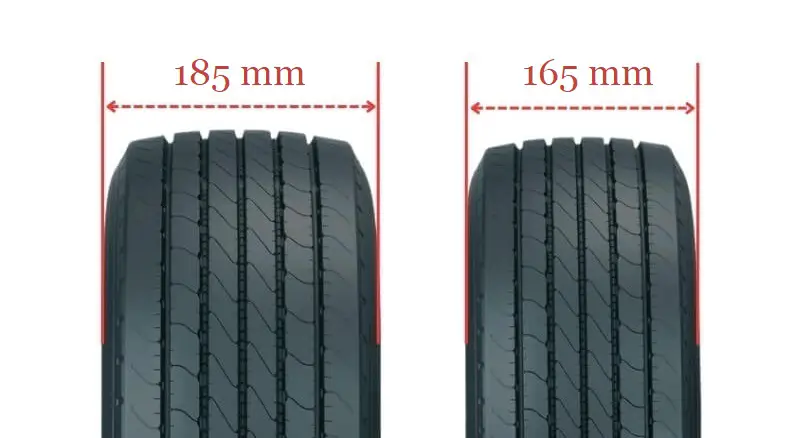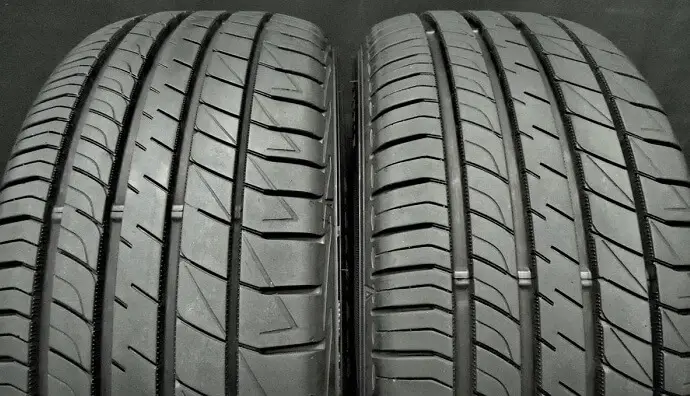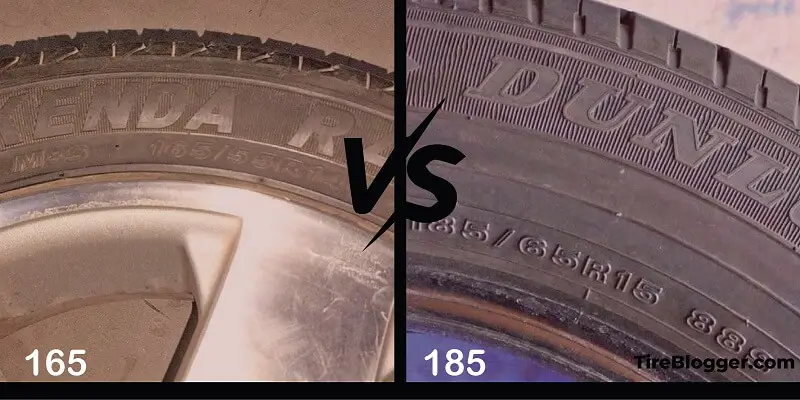165 vs 185 Tires

The section width is the main difference between tire sizes 185 and 165, with 185 being approximately 20mm wider. This variance affects several performance factors.
185 vs 165 Tires
| 185 Tire | 165 Tire |
|---|---|
| Slightly worse fuel efficiency due to increased rolling resistance and rotational mass | Better fuel efficiency owing to smaller contact patch and lower rotational mass |
| More comfortable ride due to wider contact patch and taller sidewall | Slightly firmer ride that some drivers prefer for responsiveness |
| More aggressive, aesthetic appeal | Contributes positively to aerodynamics |
| Improved stability and traction, particularly off-road or on uneven surfaces | Enhanced handling and quicker response on paved roads |
| Potentially more road noise, especially with aggressive treads | Quieter on smooth surfaces but more vibration from road irregularities |
| Endures impacts but may cause more vehicle component wear due to added weight | Potentially even tread wear and longer tread life |
| Larger contact area allows higher load capacity | Lower load capacity due to smaller footprint |
| Better traction in off-road and muddy conditions | Can cut through snow/ice more easily |
Gas Mileage
With a slightly smaller contact patch and less rotational mass, 165 tires generally confer better fuel efficiency, an aspect crucial for daily commuters and long-distance travelers.
The larger 185 tires might detract from fuel efficiency owing to increased rolling resistance and rotational mass.
Ride Comfort
The wider 185 tires generally offer a more comfortable ride than the 165 tires due to their wider contact patch and taller sidewall.
However, the 165 tires provide a slightly firmer ride that some drivers prefer for responsiveness.

Aesthetics Look
The smaller 165 tires contribute positively to vehicle aerodynamics, whereas the wider 185 tires can offer a more aggressive and aesthetic appeal. However, the larger 185 tires may slightly hinder aerodynamic efficiency.
Handling & Stability
Due to the more minor contact patch, the 165 tires typically offer enhanced handling and quicker response on paved roads.
Conversely, the 185 tires provide improved stability and traction, particularly in off-road scenarios or on uneven surfaces, owing to the wider footprint.
Noise & Vibration
The 165 tires may provide a quieter ride on smooth surfaces but might transmit more vibrations from road irregularities.
The wider 185 tires, especially those with aggressive treads, might generate more road noise.

Durability & Wear
The smaller 165 tires can potentially exhibit even wear and potentially longer tread life. The larger 185 tires, while enduring more impacts, might introduce more wear on vehicle components due to their added weight.
Load Capacity
The load capacity increases with the 185 tire width because wider tires have a larger contact patch, which can distribute weight over a wider area. The 165 tires have lower load capacity owing to the smaller footprint.
Adverse Condition
The narrower 165 tires can sometimes navigate snow and ice more effectively by cutting through to the road surface compared to the wider 185 tires.
However, the 185 tires provide better traction in specific off-road or muddy conditions.

What Is 185 In Tire Size?
In tire size notation, the number “185” typically refers to the tire’s width in millimeters. Specifically, it represents the nominal width of the tire tread from sidewall to sidewall when the tire is mounted on its specified rim size and properly inflated.
You can convert this width to inches using the following conversion factor: 185 mm ÷ 25.4 mm/inch = 7.28 inches. Therefore, a 185 tire would have a width of approximately 7.28 inches.
What Is 165 In Tire Size?
The tire size 165 means the tire has a width of 165 millimeters. It represents the nominal width of the tire tread from sidewall to sidewall when the tire is mounted on its specified rim size and properly inflated.
You can convert this width to inches using the following conversion factor: 165 mm ÷ 25.4 mm/inch = 6.496 inches. Therefore, a 185 tire would have a width of approximately 6.496 inches.

Difference Between 165 and 185 Tires
The section width is the main difference between tire sizes 185 and 165, with 185 being approximately 20mm wider. This variance affects several performance factors, including handling, traction, and ride comfort.
Can I Use 185 Tires Instead of 165?
Yes, it is possible to use 185 tires instead of 165 tires. The ideal rim width range for 165 tires (5.5-6.0 inches) overlaps with the rim width for 185 tires (5.5 inches), making the switch feasible.
However, ensure the aspect ratio and rim diameter remain the same. If not, then the overall diameter difference should stay within 3% to avoid affecting speedometer accuracy and vehicle performance.

Meet Caitlin McCormack, a Tire Size Expert and Blogger Passionate About Everything Related to Tires. With Years of Experience in the Tire Industry, Caitlin Has Become an Expert in Tire Sizes and Their Impact on Vehicle Performance.
